TIRE PRESSURE
Importance of proper tire pressure
Negative Effects of Under-Inflation
Checking tire pressure on a regular basis is essential to avoiding the negative effects of under-inflation, which many drivers do not understand.
Compromised Handling and Longer Stopping Distances
A significantly under-inflated tire loses lateral traction, making handling more difficult.
An under-inflated tire has a larger footprint than a properly inflated tire, which results in too much tire touching the ground. This increases its rolling resistance on dry road surfaces due to increased friction between the tire and the road surface. The larger footprint also reduces the tire load per unit area, which can result in increased stopping distances as compared to driving on a properly inflated tire with a smaller footprint.
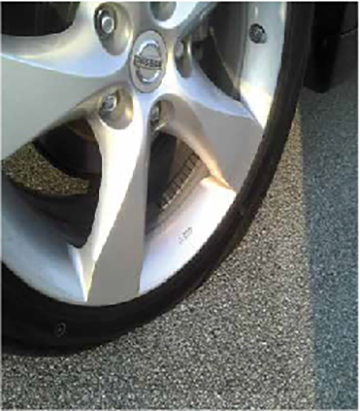
Reduced Tread Life
When a tire is under-inflated, more pressure is placed on the shoulders of the tire, which may cause the tread to wear incorrectly. An under-inflated tire wears more rapidly at the edges of the tread than it would if the tire were inflated to the proper pressure.
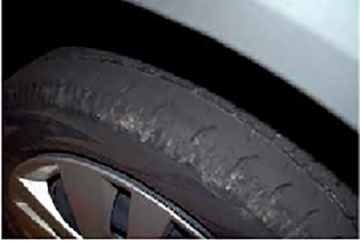
Reduced Fuel Economy
The increased rolling resistance of an under-inflated tire decreases the vehicle’s fuel economy.
Increased Risk of Tire Failure
The sidewalls on a significantly under-inflated tire flex more and the air temperature inside the tire increases, causing the tire to overheat, increasing stress and the risk of tire failure. That is why underinflation plays a role in flat tires and blowouts.
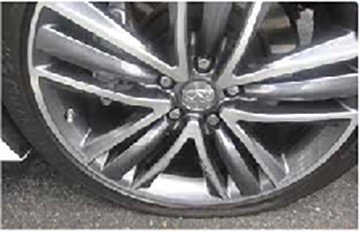
How tires lose pressure
Punctures
It is usually easy to determine when there has been a rapid air loss caused by a puncture from a road hazard. Pressure losses can also be the result of slow leaks that occur over a period of hours, days, or months. Slow leaks may be caused by slight damage to a tire, such as a road hazard that punctures a small hole in the tire or a nail that sticks in the tire.
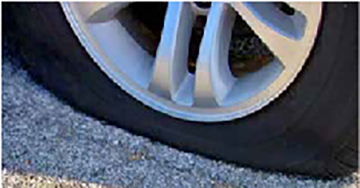

Normal Pressure Loss
Many customers do not understand that a loss of pressure over time is normal due to permeation, which is the loss of air through the pores of the tire. Permeation will typically result in a 1.0 – 1.5 psi loss of pressure per month, but the loss varies with ambient temperature.
- Tire pressure rises and falls depending on the heat caused by the vehicle’s operation and outside temperature.
- Low outside temperature can lower the temperature of the air inside the tire, which can cause a lower tire inflation pressure.
- Tire pressure changes approximately 0.6 - 1.0 psi for every 10°F of temperature change. As temperature decreases, pressure decreases.
So if your customer last checked the tire pressure when temperatures were in the 80s outside and it is now in the mid 30s, the tires are probably under-inflated.
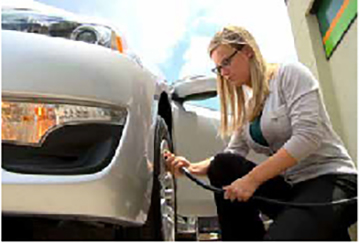
The following scenarios describe possible low pressure telltale circumstances which may result in pressure loss causing the TPMS warning light to illuminate:
Scenario 1:
A customer arrives at the dealer complaining that the tire pressure is low. The tire pressures are checked and are low as compared to the placard pressure.The measured tire pressures range from 28-30 psi. You note that the weather has recently begun to turn cooler OR the customer is overdue for maintenance.
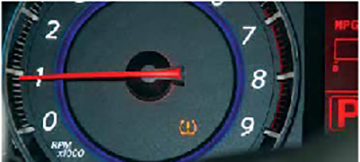
Probable explanation:
The tires have slowly lost pressure due to the seasonal temperature change or due to natural loss over time.
The tire pressure should be corrected to the recommended tire pressure specifications as shown on the Tire and Loading Information label. If needed, the vehicle should be taken for a short drive to extinguish the light.
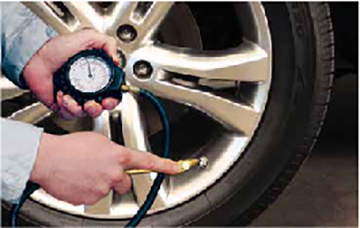
Scenario 2:
A customer arrives at the dealer complaining that the TPMS warning light has been illuminated, but it turns off after driving the vehicle to work. After cycling the ignition OFF and back to the ON position, a TPMS light is NOT found. The tire pressures are checked and compared to the placard pressure of 33 psi. The measured tire pressures range from 30-31 psi. You note that the customer drove 10 miles to your dealership and the customer states that the light was on SOLID when they left their home.
Probable explanation:
The tire pressures are below the threshold for COLD tire pressure. When the vehicle was driven, the tire temperatures increased, causing the pressure to rise 3-5 psi. This caused the TPMS light to temporarily go OFF while the tires are hot.
The tire pressures should be corrected to the recommended tire pressure specifications as shown on the Tire and Loading Information label, to resolve the concern.
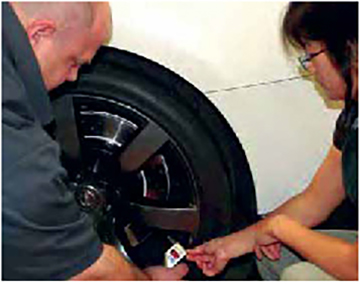
Scenario 3:
A customer arrives at the dealer complaining that the TPMS warning light is illuminated. The customer states that they have added air to a specific tire several times, but the pressure continues to drop in one of the tires. The tire pressures are checked and compared to the Tire and Loading Information label pressure of 33 psi. One tire measures 28 psi while the other three tires measure 33-37 psi.
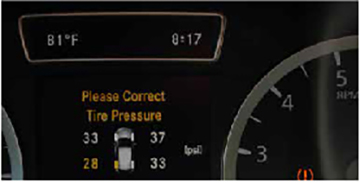
Probable explanation:
The tire measuring 28 psi has a leak. Perform a proper leak diagnosis on the tire to confirm and repair as needed.
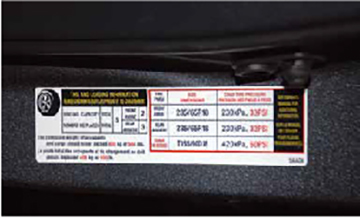
Scenario 4:
A customer arrives at the dealer complaining that the TPMS warning light is illuminated. Immediately after cycling the ignition OFF and back to the ON position, a FLASHING TPMS light is found for 1 minute and then it becomes solid.
Probable explanation:
A TPMS malfunction has occurred.
Check DTCs using CONSULT-III plus and use the diagnosis procedure specified by the ESM. Repair as needed.
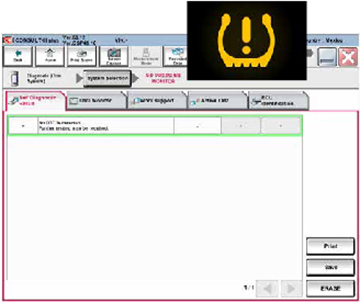
Pressure and altitude
At high altitude locations, a standard tire pressure gauge may show the tire pressure higher than the TPMS system. If not accounted for, this could result in turning ON the Low Tire Pressure Warning Light.
Standard tire pressure gauge readings increase about 1.0 psi for every 2,200 ft of altitude increase above sea level (up to 10,000 ft).
When it comes to measuring tire inflation pressure, it is important to realize there is a difference between atmospheric pressure and gauge pressure. Most pressure gauges (including all tire pressure gauges) are designed to measure the amount of pressure above the ambient atmospheric pressure.
At sea level, a completely flat tire still experiences 14.7 pounds per square inch of atmospheric pressure. However, a tire pressure gauge would read 0 psi because the pressure outside the tire is equal to the pressure inside.

Since a tire mounted on a wheel essentially establishes Since a tire mounted on a wheel essentially establishes a flexible airtight pressure chamber, it retains the same volume of air molecules regardless of its elevation above sea level.
A tire pressure gauge used at sea level with atmospheric pressure of 14.7 pounds per square inch would indicate a higher pressure at higher elevations because the ambient atmospheric pressure is lower.
